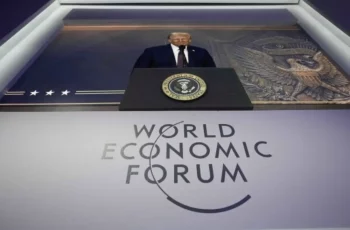
The inauguration of the 47th president of the United States was attended by three Latin American leaders: Javier Miley, Daniel Noboa and Santiago Peña, who were seated in the Rondomda. Nayib Bukele, although invited, did not attend, and Jair Bolsonaro was unable to obtain permission to leave his country, so his wife and son went to Washington in his place. As the day approached, Donald Trump’s number of harsh statements increased, which were perceived negatively by current politicians in the region. Therefore, Panama received support from other Latin American countries who emphasized the Central American country’s sovereignty over the inter-oceanic canal and condemned Trump’s desire to re-establish US control over it. Given the hostile rhetoric, the leaders of Panama and Colombia decided not to congratulate Trump on his inauguration.
At the same time, it can be assumed that the issue of the Panama Canal for the 47th president lies in the plane of economic interests. There is no question of a real annexation of territories. Given the problems with the capacity of this infrastructure artery due to El Nino’s effects and the shallowing of Lake Gatun’s freshwater, threats to a Central American country may hide ordinary commercial interests. According to some, the passage of ships should be reviewed in favor of North American merchant and military fleets, carried out in a reserved queue (by auction). So, from Washington’s perspective, it seems that ships from the United States should be allowed to pass first at regular or reduced costs, and the rest should participate in the auction. This would require a lot of time and money on their part. Statements about China’s economic exclusion from Panama should also be considered.
Another storyline was the response to the head of the White House’s promise to begin mass deportations of undocumented migrants unilaterally. In response, Mexico hosted a meeting with representatives from 11 other countries in the area to discuss how to address these challenges. Leaders rejected the idea of sending undocumented immigrants back to their countries without coordinating with their own governments. Some, like Colombia, even refused to accept flights sent by their neighboring country, considering it an unacceptable and degrading form of “repatriation” for their citizens.
At the same time, some right-wing conservative groups supported some of the decisions made by the new head of the White House. For instance, the Ecuadorian government expressed support for Trump’s decision to designate drug cartels as international terrorist organizations. The Salvadoran leader also showed willingness to accommodate some members of the Tren de Aragua gang and place them in a maximum-security prison. The Argentinian president said he was prepared to sacrifice ties with other MERCOSUR countries if necessary to achieve closer cooperation with the United States.
It appears that the intensity of inter-American relations will continue to increase. This is evident from indirect signs such as similarities between Trump’s actions and statements during his first term in office.
Promises have been made to change migration policy and combat illegal immigration, with the involvement of the military. This affects Latin American countries, especially Mexico, as a result of the return of the “Remain in Mexico” program.
The vector for changing the tariff policy by increasing import duties has been re-outlined, not only against China, but also against its closest neighbors Mexico and Canada. Tariffs of 25% were not introduced for these countries on the first day after Donald Trump took office as promised, but were instead implemented on February 1st, 2025. The decision covers almost all Mexican and Canadian imports to the United States, and the Tax Foundation estimates that these tariffs could result in additional costs of over $670 for each North American household this year. Just a few days after negotiations on February 3rd and 4th, Washington postponed the implementation of tariffs against its neighbors by a month. It seems unlikely that the “tariff battle” with Canada and Mexico will end here, as changes are expected not only in March but also in April 1st. By that date, D. Trump instructed the relevant economic authorities to prepare reports on a wide range of trade policy issues. He ordered an investigation into the causes of the large annual deficit in goods trade and recommended measures, such as an additional global tariff, to address the imbalance.
Trump has once again called the North American Free Trade Agreement (NAFTA) the “worst deal”. If during his first term, NAFTA was replaced by USMCA, the future of the modernized agreement is now in question. In 2026, it is planned to update its provisions, which the 47th President no longer considers beneficial for his country. He wants to make a revision as soon as possible. Considering the fact that President Trump’s election program, Agenda 47, did not explicitly mention any plans for Latin American countries, most experts still expect Washington to continue its multi-level approach towards its neighbors in the region.










Comments